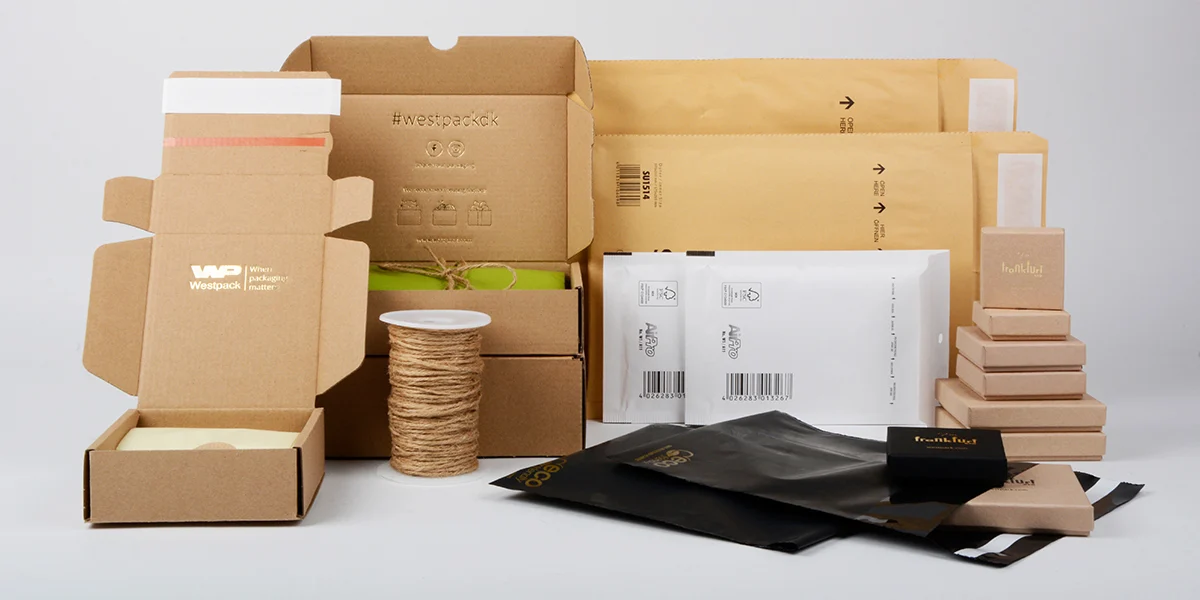Sustainable Packaging Materials: What Are They and Why Do They Matter?

Packaging is everywhere—from the boxes that deliver our online orders to the wraps around everyday products. But many of these materials end up as waste and harm the environment.
That’s why more companies are choosing sustainable packaging. These materials are designed to be better for the planet. In this article, we’ll explore what sustainable packaging is, the different types available, and why switching to eco-friendly options is so important for businesses and the environment.
What Are Sustainable Packaging Materials?
Sustainable packaging materials are eco-friendly alternatives to traditional packaging. They’re made from recyclable or biodegradable resources that reduce harm to our planet. These materials include recyclable PET or HDPE plastics, biodegradable polymers, cardboard, and paper.
They can be reprocessed into new items, cutting waste. Some sustainable options are compostable, breaking down naturally without leaving harmful residues
Common type of Sustainable Packaging
Sustainable packaging comes in many forms. Let’s explore some popular eco-friendly options that are changing the game.
Paper-Based Packaging
Paper-Based Packaging is a top choice for eco-friendly packaging. It’s easy to recycle and breaks down naturally. Many companies now offer 100% recyclable shipping boxes. PackingSmartly is an example. They make boxes from recycled materials that can be used again.
Paper packaging fits well with green energy plans. It’s a smart pick for businesses that want to cut waste. This makes it easier to switch to paper-based options. Paper can often be used more than once, which saves resources and money
Biodegradable Bioplastics
Biodegradable bioplastics offer a greener alternative to traditional plastics. These materials are made from biological sources like corn starch or sugarcane, not petroleum. They break down naturally, reducing waste and pollution.
Two common types are Polylactic Acid (PLA) and Polyglycolic acid(PGA). PLA needs industrial composting, while PGA can decompose in various settings. You can learn more information in this company.
Companies like Good Natured and Notpla are leading the way in bioplastic packaging. These eco-friendly options help cut down on single-use plastic waste. They’re great for items that are used once and thrown away.
Mushroom Packaging
Mushroom packaging uses mycelium, the root structure of fungi, to create eco-friendly containers. This material offers a green alternative to Styrofoam and other harmful plastics. Companies like IKEA have started using 100% biodegradable mushroom-based packaging for their products.
Packaging made from mushrooms breaks down naturally, cutting waste in packaging uses. It’s strong enough to protect items during shipping but doesn’t harm the earth when thrown away.
Seaweed Packaging
Moving from mushroom-based options, seaweed packaging offers another eco-friendly choice. This material can be used for films, bags, and utensils.
Seaweed cultivation helps coastal communities and improves soil quality. It can be composted at home, which adds nutrients to gardens. This packaging type is gaining attention for its many benefits.
It’s a promising solution for reducing plastic waste and supporting local economies.
Why Do Sustainable Packaging Materials Matter?
Sustainable packaging materials play a crucial role in protecting our planet. They reduce waste, conserve resources, and lower carbon emissions – all while meeting consumer demands for eco-friendly products.
Reduced Environmental Impact
Sustainable packaging cuts down on waste that harms our planet. It uses less energy to make and breaks down faster after use. This means fewer plastics end up in landfills or oceans.
These eco-friendly materials also help lower greenhouse gas emissions. They use fewer resources to produce and transport. As a result, they leave a smaller carbon footprint. This is crucial since nearly half of all plastic is only used once before being thrown away.
Conservation of Resources
Sustainable packaging helps save our planet’s resources. It uses less raw materials and energy in production. This means we can keep more natural resources for future use. Smart packaging design also cuts down on waste.
It often uses recycled materials, which reduces the need for new ones. This approach helps protect forests, water, and other vital resources.
Minimized Carbon Footprint
Sustainable packaging cuts down carbon emissions big time. Companies that switch to eco-friendly materials shrink their carbon footprint fast. This move helps them meet their net-zero carbon goals.
Less energy goes into making and moving green packaging. This means fewer greenhouse gases get released. Biodegradable materials also break down without harming the earth. They don’t sit in landfills for years, spewing out harmful gases.
Challenges in Adopting Sustainable PackagingCost Implications
Switching to sustainable packaging often costs more at first. Companies must buy new materials and change their processes. This can be hard for small businesses with tight budgets.
But over time, eco-friendly packaging can save money. It cuts down on waste disposal fees and might even lead to tax breaks. Some firms find that green packaging helps them sell more products, too.
Green packages are often lighter and take up less space. This can mean lower shipping costs. Companies should weigh these factors carefully before making the switch
Limited Availability of Materials
Cost concerns often go hand-in-hand with material scarcity in sustainable packaging. Many eco-friendly options face supply shortages. This limits their widespread use. Companies struggle to find enough sustainable materials for large-scale production.
Some bio-based plastics, for example, rely on specific crops. Bad harvests can disrupt supply chains.
Businesses must plan carefully when switching to green packaging. They need to assess if their chosen materials will be available long-term. Some may have to use a mix of sustainable and traditional options.
Technological Barriers
Limited availability of materials often leads to technological hurdles. Many companies face challenges in adopting sustainable packaging due to tech barriers. Advanced technology is crucial for this shift, but not all businesses have it.
Some firms lack the tools or know-how to make eco-friendly packages. This gap in tech skills can slow down the move to greener options.
Money plays a big role in these tech issues. Many businesses don’t see room in their budget for new packaging tech. They might want to go green, but can’t afford the needed upgrades.
Conclusion
Sustainable packaging is a game-changer for our planet. It cuts waste, saves resources, and shrinks carbon footprints. Businesses can make a big difference by choosing eco-friendly materials.
Every small step counts in this green journey. Now’s the time to explore sustainable options for your brand’s packaging needs.






